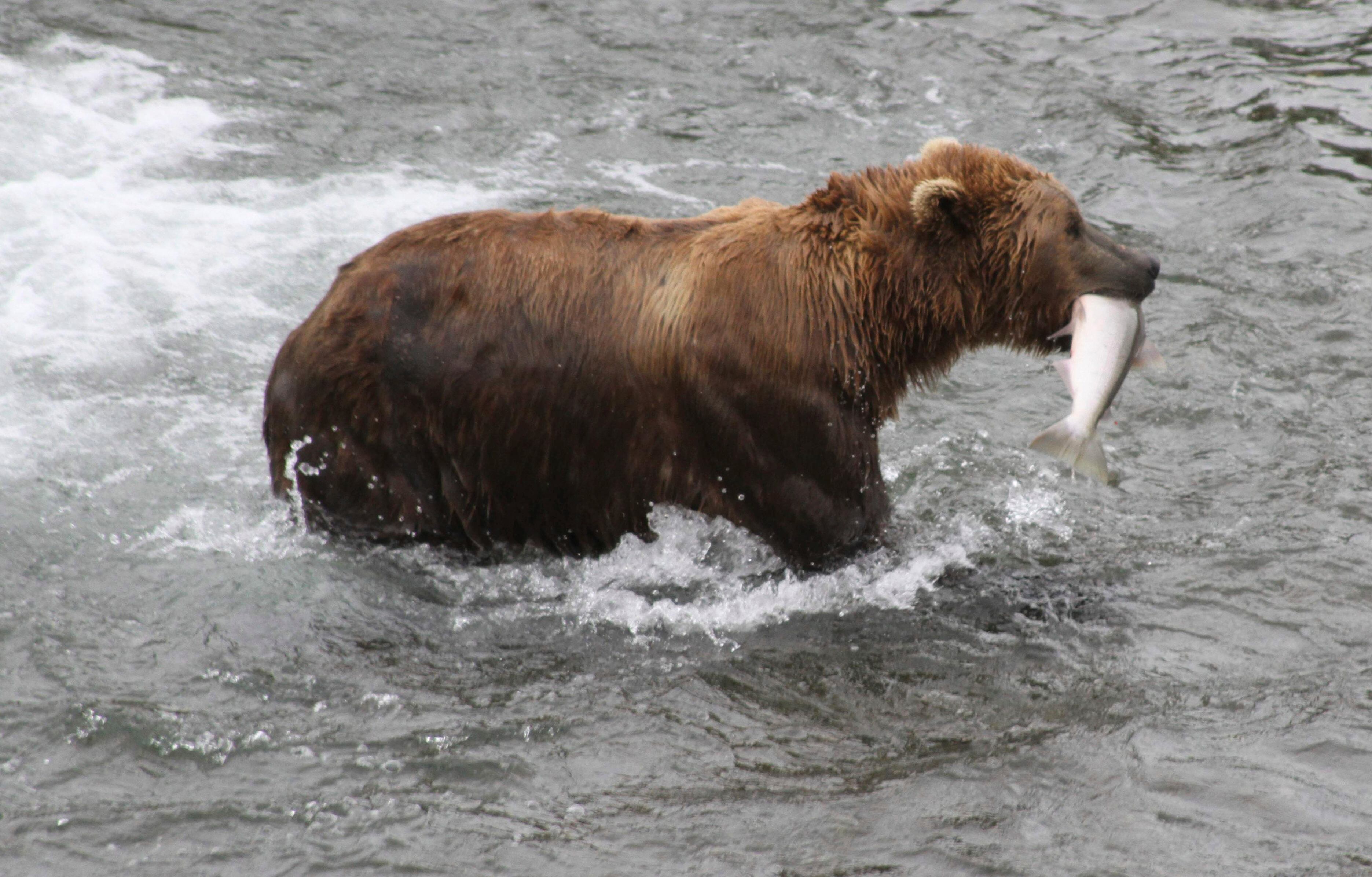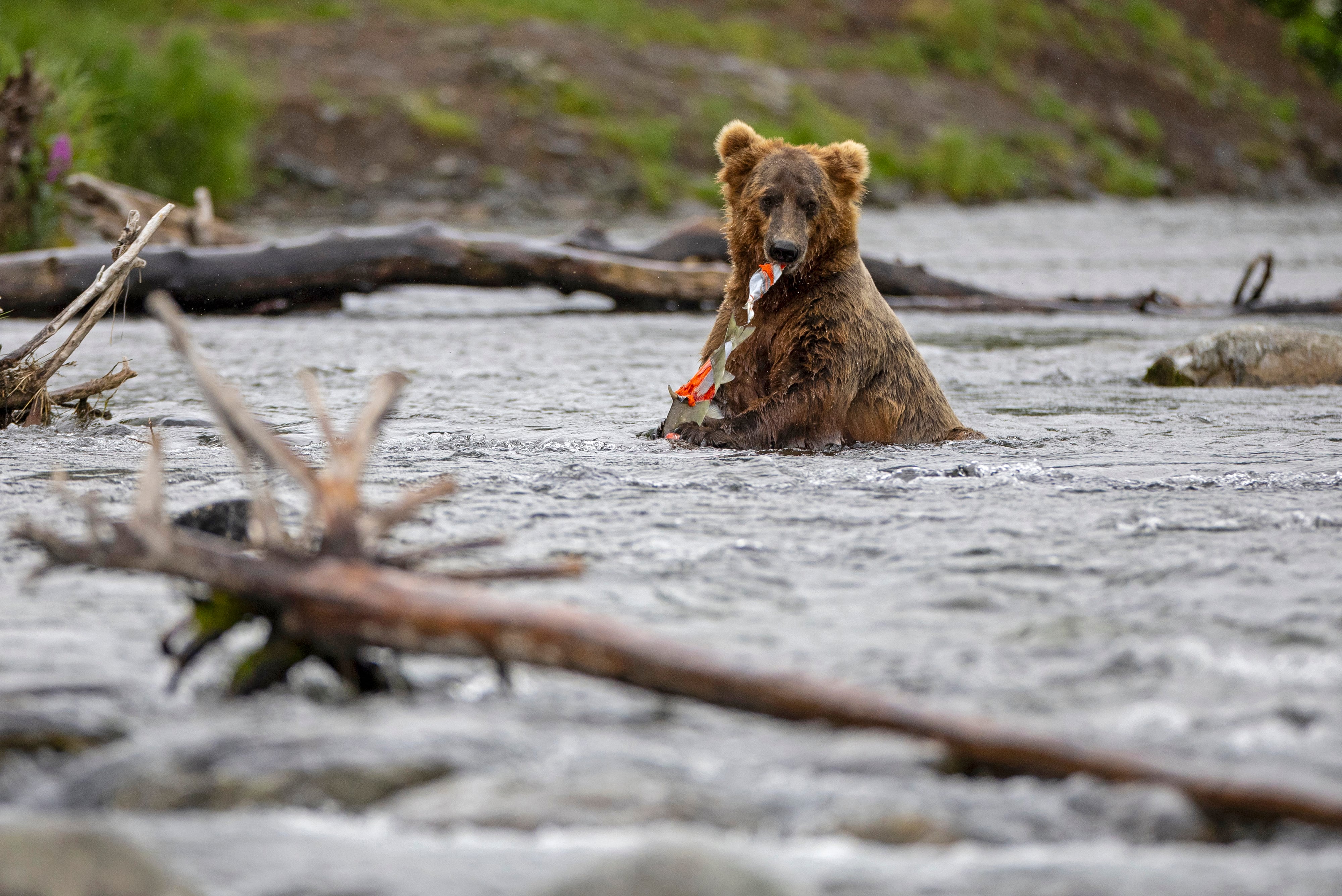She is beauty. She is grace. She is pudgy around the edges and furry around the face.
And, most importantly, she is this year’s winner of Fat Bear Week.
Grazer, a large adult female brown bear with “a long straight muzzle and conspicuously blond ears,” was voted this year’s fattest bear in the National Park Service’s annual bracket-style contest. Out of 11 other bears at Katmai park in Alaska, Grazer beat the competition and made a remarkable transformation from a skinny bear in the spring to a thick teddy over the last few months.
Grazer, known as 128 Grazer to rangers, is a skilled fisher and highly protective mother bear who has been known to confront much larger and more dominant bears, according to the NPS.
Her dominance certainly carried over to social media, which amassed a record-breaking 1,382,783 votes this year. Fat Bear Week began in 2014 and has been growing in popularity since, Mike Fitz, a former ranger said.
RELATED

The runner up this year was Chunk, who albeit aptly named, failed to secure enough votes from the adoring public to elbow Grazer out.
Still, with his “low-hanging belly and ample hindquarters,” Chunk put on an impressive amount of weight over the summer.
Now, exactly how much Chunk, Grazer and the rest of the bears weigh is a relative estimate for the purpose of the competition, although in years past, Chunk clocked in at 1,200 pounds, the park guessed. Being a thousand-pound-plus male bear is not unusual.
“Some people truly vote for who is the fattest bear — who’s the biggest, beefiest, largest bear,” said Felicia Jimenez, an interpretive park ranger specializing in digital media at Katmai. “Some people vote on the transformation. Some people really connect with a bear [for their] stories.”
Many of the bears made similar gains over the summer, which park rangers say is proof of a healthy ecosystem at Brooks River of sockeye salmon. For the bears, who don’t eat during winter hibernation, putting on the pounds is essential to their health and success.
“We’re lucky that it is healthy enough that we’ve been able to see consistent [salmon] runs or the same bear show up year after year because they keep coming back,” Jimenez said.
Showcasing that phenomenon to the world via livestreams, ranger talks and social media raises awareness for the bears, the beauty of nature and the work the Parks Service does.
But for now, after another successful season of munching, these bears are headed for a long winter’s nap.
And they deserve it.
Molly Weisner is a staff reporter for Federal Times where she covers labor, policy and contracting pertaining to the government workforce. She made previous stops at USA Today and McClatchy as a digital producer, and worked at The New York Times as a copy editor. Molly majored in journalism at the University of North Carolina at Chapel Hill.





